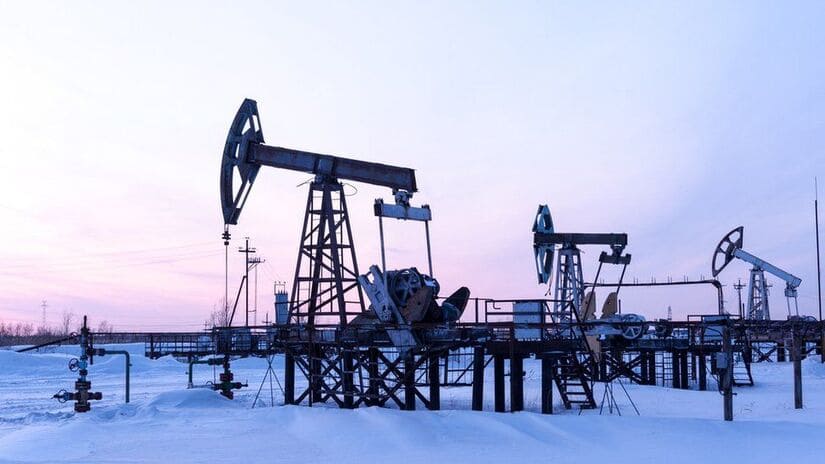Russian Deputy Prime Minister Alexander Novak confirmed that Russian oil production and exports are stable despite Western sanctions and price ceilings, as Russian oil finds alternative buyers under these circumstances.
“Our companies have taken all the necessary measures – first and foremost – to find new supply chains, markets, and transport our oil,” Novak said, in statements seen by the specialized energy platform. “It finds demand for it in other markets.”
He added that he would not mention these markets specifically, “because the situation today requires great secrecy,” according to what was reported by Reuters.
It is noteworthy that Russia – the second largest oil exporter in the world – produced 535 million tons (10.7 million barrels per day) of crude in 2022, up from 524 million tons (10.48 million barrels per day) in 2021.
Oil prices are acceptable
Speaking to Russia 24 TV, after the meeting of the Joint Ministerial Monitoring Committee of the OPEC + alliance, Novak said that the current level of oil prices is acceptable, amidst the stability in the global oil market.
Novak indicated that there are expectations of an increase in oil demand, due to the recovery in China and the control of coronavirus infections.
The Joint Ministerial Monitoring Committee recommended – in its meeting today, Wednesday (February 1, 2023) – adherence to the oil production policy, according to what was stated in a press release, which was seen by the specialized energy platform.
The members of the Committee reaffirmed their commitment to the Declaration of Cooperation, which extends until the end of 2023, as agreed upon at the 33rd Ministerial Meeting on October 5, 2022.
The Joint Ministerial Monitoring Committee is scheduled to meet on April 3, while the next ministerial meeting of the coalition will be held on June 4.
Russian oil prices fell
Meanwhile, the Russian Ministry of Finance announced – today, Wednesday (February 1) – that the average price of the Russian Urals crude blend amounted to $49.48 per barrel in January 2023, less than the $60 ceiling set by Western countries, down 42%. for January 2022.
Russia’s federal budget for 2023 is based on an average Urals crude price for the year of $70.10 per barrel, according to Reuters.
The Ministry of Finance’s Urals price, used as a basis for taxation, is calculated by the Argos pricing agency and takes into account crude blend prices in the Baltic and Black Seas, including the cost of insurance and freight.
The Group of Seven, Australia and the European Union imposed a cap on the price of a barrel of Russian oil at $60 on December 5, 2022, with a ban on imports of Russian refined oil products starting on February 5.
In response, Russian President Vladimir Putin – last month – signed a decree banning the supply of crude oil and oil products to countries that adhere to the cap, starting from February 1 for a period of 5 months.
The following graph – prepared by the Energy Research Unit – shows Russia’s oil exports in 2022:
Russian oil exports
Alexander Novak stated – during a previous government meeting held on January 11, 2023 – that Russian oil producers had not faced any difficulties in securing export deals, despite Western sanctions and price ceilings.
“We have been in constant contact with companies, and the February contract has been completed. In general, companies do not say they have problems until today,” Novak said – at the meeting, which was led by President Vladimir Putin.
Novak explained that the main problem facing Russian oil is the large discount compared to international standards, as well as high shipping costs.
“But I hope it will be temporary, and the discount will go down over time, as we saw in 2022,” he added.
Collapses in Russian oil revenues
A report published by the Finnish Center for Energy and Clean Air Research on January 11 revealed that revenues from Russian fossil fuel exports collapsed by 17% in December 2022.
This means that it recorded its lowest level since Moscow’s invasion of Ukraine in February, which is evidence that Western sanctions on Russian oil are starting to bear fruit.
The report indicated that the first month of the European Union’s ban on Russian oil imports by sea and the price ceiling imposed by the Group of 7 countries, in which Moscow incurred an estimated 160 million euros ($171.8 million) per day.
The report also indicated that Western sanctions caused a 12% drop in Russian oil exports, and a 23% drop in selling prices, compared to a 32% drop in Russian crude revenues in December.
Russia still earns an estimated 640 million euros ($687 million) a day from fossil fuel exports, down from 1 billion euros ($1.07 billion) in the March-May 2022 period, according to the report I have seen. specialized power platform.
related topics..
Also read..

Leave a Reply